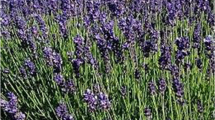Abstract
The antignawing activity of cinnamomi cortex (the dried bark of Cinnamomum cassia) derived materials against laboratory-reared mice was evaluated using a wire-dipping method. The biologically active component of C. cassia bark was characterized by spectral analysis as cinnamaldehyde. The antignawing activity of the compound was compared with that of four commercially available compounds: cinnamyl alcohol, trans-cinnamic acid, eugenol, and salicylaldehyde. Cinnamaldehyde and cinnamyl alcohol exhibited potent repellent activity, whereas little or no activity was produced from salicylaldehyde. Moderate activity was observed in trans-cinnamic acid and eugenol. Cinnamaldehyde and cinnamyl alcohol exhibited potent and moderate repellent activity at 5 and 2.5% solutions, respectively, of these compounds in ethanol. Little or no activity was observed in 1% solution. As a naturally occurring repellent, cinnamaldehyde and cinnamyl alcohol could be useful as a new preventive agent against various kinds of damage caused by rodents.
Similar content being viewed by others
REFERENCES
Ahn, Y. J., Lee, S. B., Okubo, T., and Kim, M. 1995. Antignawing factor of crude oil derived from Thujopsis dolabrata S. et Z. var. hondai sawdust against mice. J. Chem. Ecol. 21:263–271.
Beauchamp, G. K., and Mason, J. R. 1991. Comparative hedonics of taste, pp. 159–183, in R. C. Bolles (eds.). The Hedonics of Taste. Lawrence Erlbaum Assoc., Hillsdale, New Jersey.
Buckingham, J. 1992. Dictionary of Natural Products. Chapman & Hall, London.
Budavari, S. B., O'Neil, M. J., Smith, A., and Heckelman, P. E. 1989. The Merck Index. Merck & Co., Rahway, New Jersey.
Dubock, A. C. 1986. The evaluation of potential effects on non-target vertebrate populations as a result of pesticide use, pp. 257–270, in A. H. H. Mohammad, T. M. Zaghloul, A. M. Salit, and M. Zakaria (eds.). Proceedings of the 2nd Symposium on Recent Advances in Rodent Control. Kuwait, 1985.
Hansson, L. 1988. Natural resistance of plants to pest rodents, pp. 391–397, in I. Prakash (ed.). Rodent Pest Management. CRC Press, Boca Raton, Florida.
Harborne, J. B. 1993. Introduction to Ecological Biochemistry, 4th ed. Academic Press, New York.
Harding, N. T. 1985. Rodent repellent paint and bars. U. S. patent number 4,654,080.
Hayes, W. J., Jr., and Laws, E. R. 1991. Handbook of Pesticide Toxicology, Vol. 1, Academic Press, New York, pp. 107–167.
Hodgson, E., Silver, I. S., Butler, L. E., Lawton, M. P., and Levi, P. E. 1991. Metabolism, pp. 107–167, in W. J. Hayes, Jr., and E. R. Laws (eds.). Handbook of Pesticide Toxicology, Vol. 1, Academic Press, New York.
Howard, W. E., Marsh, R. E., and Cole, R. E. 1968. Food detection by deer mice using olfactory rather than visual cues. Anim. Behav. 16:13–21.
Jacobson, M. 1989. Botanical pesticides: Past, present, and future, pp. 1–10, in J. T. Arnason, B. J. R. Philogene, and P. Morando (eds.). Insecticides of Plant Origin. ACS Symposium Series No. 387, American Chemical Society, Washington, D.C.
Kakinuma, K., Koike, J., Kotani, K., Ikekawa, N., Kada, T., and Nomoto, M. 1984. Cinnamaldehyde: Identification of an antimutagen from a crude drug, cinnamomi cortex. Agric. Biol. Chem. 48:1905–1906.
Lee, H. S., and Ahn, Y. J. 1998. Growth-inhibiting effects of Cinnamomum cassia bark-derived materials on human intestinal bacteria. J. Agric. Food Chem. 46:8–12.
Lund, M. 1983. The effect of various anticoagulants on non-target animals. Danish Pest Infestation Laboratory, Annual Report 1982, pp. 93–95.
MacNicoll, A. D. 1986. Resistance to 4-hydroxycoumarin anticoagulants in rodents, pp. 87–99, in E. H. Glass (chmn.). Pesticide Resistance: Strategies and Tactics for Management. National Academy Press, Washington, D.C.
Marsh, R. E. 1988. Chemosterilants for rodent control, pp. 353–367, in I. Prakash (ed.). Rodent Pest Management. CRC Press, Boca Raton, Florida.
Meehan, A. P. 1988. Chemical repellents, pp. 399–405, in I. Prakash (ed.). Rodent Pest Management. CRC Press, Boca Raton, Florida.
Mohammad, A. H. H., Zaghloul, T. M., Salit, A. M., and Zakaria, M. 1986. Proceedings of the 2nd Symposium on Recent Advances in Rodent Control. Kuwait, 1985, 365 pp.
Morimoto, S., Nonaka, G., and Nishioka, I. 1986. Tannins and related compounds XXXVIII. Isolation and characterization of flavan-3-ol glucosides and procyanidin oligomers from cassia bark (Cinnamomum cassia Blume). Chem. Pharm. Bull. 34:633–642.
Namba, T. 1986. Colored Illustrations of Wakan-Yaku (The Crude Drugs in Japan, China and the Neighbouring Countries). Hoikusha Publishing, Osaka, Japan.
Nolte, D. L., Mason, J. R., and Clark, L. 1993. Nonlethal rodent repellents: Differences in chemical structure and efficacy from nonlethal bird repellent. J. Chem. Ecol. 19:2019–2027.
Prakash, I. 1976. Rodent Pest Management-Principles and Practice-Monograph No. 4. Central Arid Zone Research Institute, Jodhpur, pp. 1–28.
Prakash, I. 1988a. Rodent Pest Management. CRC Press, Boca Raton, Florida, 480 pp.
Prakash, I. 1988b. Bait shyness and poison aversion, pp. 321–329, in I. Prakash (ed.). Rodent Pest Management. CRC Press, Boca Raton, Florida.
Rogers, J. G. 1978. Repellents to protect crops from vertebrate pests: Some considerations for their use and development, pp. 150–162, in R. W. Bullard (ed.). Flavour Chemistry of Animal Foods. ACS Symposium Series No. 67, American Chemical Society, Washington, D.C.
SAS. 1995. SAS User's Guide: Statistics. SAS Institute, Cary, North Carolina.
Swain, T. 1977. Secondary compounds as protective agents. Annu. Rev. Plant Physiol. 28:479–501.
Thompson, D. P. 1989. Fungitoxic activity of essential oil components on food storage fungi. Mycologia 81:151–153.
Yun, E. J., Lee, S. B., Lee, H. K., Lee, H. S., and Ahn, Y. J. 1998. Antignawing activity of plant extracts against mice. Agric. Chem. Biotechnol. 41:95–98.
Author information
Authors and Affiliations
Rights and permissions
About this article
Cite this article
Lee, HK., Lee, HS. & Ahn, YJ. Antignawing Factor Derived from Cinnamomum cassia Bark Against Mice. J Chem Ecol 25, 1131–1139 (1999). https://doi.org/10.1023/A:1020890027486
Issue Date:
DOI: https://doi.org/10.1023/A:1020890027486




